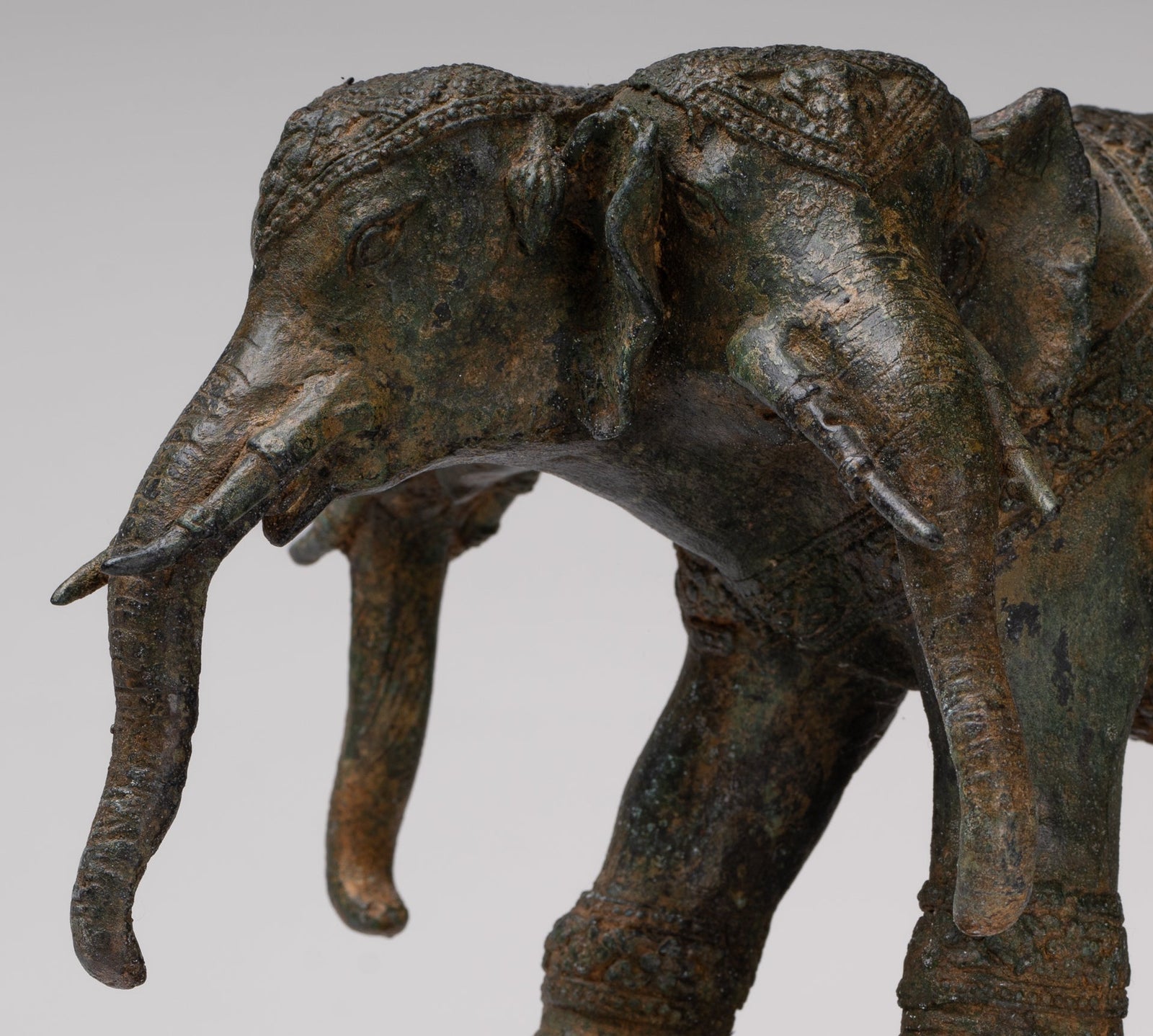
The Significance of Erawan in Thai Culture
Erawan, the mythical three-headed elephant, holds a central place in Thai culture and spirituality. Known as Airavata in Hindu mythology, Erawan is deeply rooted in the traditions of Southeast Asia, where it symbolizes strength, prosperity, and divine connection.
In Thailand, Erawan's importance transcends mythology and religion, becoming a cultural and spiritual emblem celebrated in art, architecture, and daily life.
Mythological Roots of Erawan
The origins of Erawan can be traced back to Hindu cosmology. According to ancient texts like the Mahabharata and Puranas, Erawan is the celestial mount (vahana) of Indra, the king of gods and lord of rain. This magnificent elephant is often depicted with three heads—sometimes even thirty-three in Hindu lore—each head symbolizing immense power and wisdom. In Hindu mythology, Erawan has the ability to traverse heaven and earth, carrying divine blessings to mortals.
When Hinduism and Buddhism spread across Southeast Asia, the tale of Erawan was adapted and integrated into local beliefs, including those in Thailand. Here, Erawan evolved into a symbol of royal power, spiritual protection, and natural abundance.
Erawan in Thai Architecture and Art
Erawan’s grandeur is immortalized in many forms of Thai art and architecture. The most notable representation is the Erawan Shrine (San Phra Phrom) in Bangkok. Despite being named after the mythical elephant, the shrine is dedicated to Phra Phrom, the Thai interpretation of the Hindu god Brahma. Built in 1956, the shrine became a prominent spiritual site after the construction workers building the adjacent Erawan Hotel encountered a series of misfortunes. To appease the spirits, the shrine was erected, and it has since become a place of pilgrimage and devotion.
Another iconic depiction of Erawan is the Erawan Museum in Samut Prakan, a province near Bangkok. This museum is housed in a colossal three-headed elephant statue, towering over 43 meters in height. Inside, visitors can explore intricate displays of Thai art, culture, and history. The museum serves as a tribute to Erawan’s significance, blending mythology with Thailand’s artistic heritage.
Symbolism and Cultural Relevance
Erawan symbolizes a range of virtues and ideals that resonate deeply with Thai culture:
-
Strength and Power: The sheer size and majesty of Erawan represent strength and resilience, qualities that are highly valued in Thai society.
-
Spiritual Protection: As the mount of Indra, Erawan is seen as a guardian against misfortune and evil forces. Many Thai people pray to Erawan for safety and blessings.
-
Prosperity and Fertility: Erawan’s association with rain—a life-giving force in agricultural societies—makes it a symbol of abundance and fertility.
-
Harmony and Balance: The three heads of Erawan can be interpreted as a representation of balance among body, mind, and spirit, or the interconnectedness of the three realms: heaven, earth, and the underworld.
Erawan in Modern Thailand
In contemporary Thailand, Erawan continues to inspire devotion and cultural pride. The Erawan Shrine is a bustling spiritual hub where locals and tourists alike offer prayers, flowers, and incense. Traditional Thai dance performances are often held at the shrine as acts of gratitude for answered prayers.
The image of Erawan is also prevalent in Thai festivals, literature, and popular culture. During significant events, such as the Royal Barge Procession, symbols of Erawan are used to emphasize the divine authority and grandeur of the Thai monarchy.
Lessons from Erawan’s Legacy
The story and symbolism of Erawan provide timeless lessons:
-
Respect for Nature: Erawan’s connection to rain and fertility underscores the importance of living in harmony with the environment.
-
Spiritual Devotion: The reverence shown to Erawan reflects the deep spiritual roots of Thai culture and the belief in higher powers guiding human lives.
-
Cultural Continuity: The enduring presence of Erawan in modern Thailand highlights the importance of preserving cultural heritage while adapting to contemporary contexts.
Conclusion
Erawan’s importance in Thailand goes beyond mythology, serving as a bridge between the spiritual and the material, the past and the present. As a symbol of strength, protection, and prosperity, Erawan continues to inspire devotion and cultural pride among Thai people.
Whether through the sacred Erawan Shrine, the magnificent Erawan Museum, or countless artistic depictions, the mythical elephant remains a powerful emblem of Thailand’s rich cultural tapestry.


